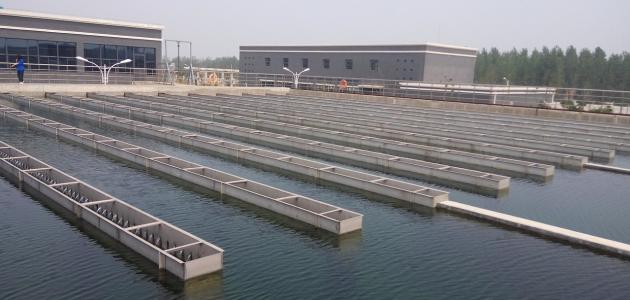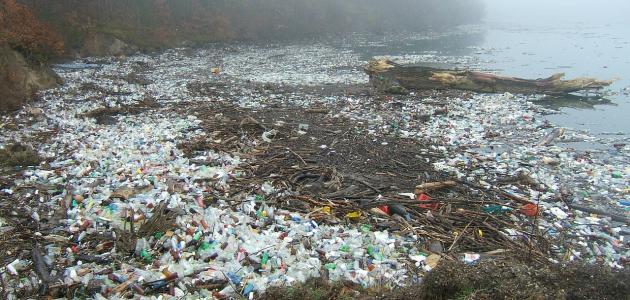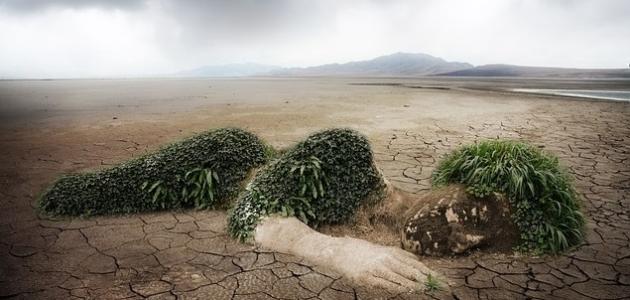Manifestations of environmental imbalance
The term ecosystem was coined in 1935 by British ecologist Arthur Tansley, who defined it as the environment in which living organisms, such as animals, plants, and bacteria, live and interact continuously with non-living organisms. surrounding them, such as: air, water, soil, forests, coral reefs, pastures, etc. Ecosystems have naturally existed in a state of balance, as all types and species of living organisms can coexist with each other, and this balance can continue as long as No change has occurred, causing the ecosystem to enter a state of imbalance known as ecological imbalance, which is any change or disturbance that could cause an imbalance in the ecosystem as a result of natural or human causes.
Since the beginning of the industrial revolution, many factors have led to changing the nature of the surface of the planet Earth, as it resulted in noticeable progress in technological technologies and a significant increase in population numbers. Accordingly, the demand for natural resources increased to meet the needs of the population, until the resources were exploited in an excessive manner that led to The imbalance in the ecosystem, in addition to the random dumping of toxic, nuclear, and medical waste, has affected a wide range of the environment and its delicate balance. The bottom line is that human use of material and biological resources in an incorrect way in order to meet his needs leads to environmental deterioration, and the following paragraphs explain the most prominent manifestations. Ecological imbalance.
Read also:The causes of global warmingHarm to health
Environmental pollution, which includes air, water, and soil pollution, is greatly linked to human health, due to the harmful chemical and biological factors that appear as a result of pollution, and negatively affect human health, as elements of the environment contaminated by human and animal waste lead to the spread of many infectious diseases. One of the most prominent examples of this is the plague, which spread in the Middle Ages through rats that fed on contaminated human waste. Therefore, developed countries tried to eliminate environmentally transmitted diseases through vaccination and sterilization campaigns. However, in 2003 AD, SARS, or what is known as acute respiratory syndrome, spread. (SARS) in many countries, which confirms that no country is completely immune from the spread of environmentally transmitted diseases.
Soil erosion
The problem of soil erosion mainly affects its fertility and production capacity, and therefore it is important to know the reasons behind this problem, and the following points represent the most important of these reasons:
- Soil Erosion, which is a global problem represented by the removal of the surface layer of soil, may occur as a result of natural factors, or due to human activities that increase its severity, especially when it causes the removal of vegetation cover.
- Improper use of land.
- Increased soil acidity or salinity, which directly affects its fertility. This occurs as a result of acid rain, or the accumulation of water-soluble salts in the soil.
- Soil saturation with water.
- Deterioration of the chemical condition of the soil (in English: Chemical Degradation), which occurs as a result of the leaching of nutrients from the soil, or the leakage of radioactive and harmful chemical substances into it.
Desertification
Desertification occurs as a result of two main factors: the natural factor represented by severe and recurring soil drought, and the human factor represented by human exploitation of dry lands in an excessive manner. This problem can be addressed through biological restoration of the environmental conditions in these desert lands. It is worth noting that the term Desert includes a wide range of environmental complexes, which are:
Read also:Making teaching aids from environmental materials- Deserts that suffer from the problem of scarcity of rain, as rain does not fall there annually.
- Deserts in which the annual rainfall rate is variable and low, i.e. less than 100 mm annually.
- Deserts in which the average rainfall is about 100-200 mm annually, meaning that it is insufficient for the production of agricultural crops.
- Deserts formed as a result of human overexploitation of semi-arid lands. The average rainfall is 200-350 mm annually.
Depletion of genetic diversity
The genetic material found in domesticated species of plants, crop trees, livestock, aquatic animals, microorganisms, and others is used in domestication and breeding programs in order to improve their characteristics, such as productivity, nutritional quality, flavor, tolerance, and resistance to pests and diseases. However, selecting specific options from In order to obtain the desired product with the best specifications, this led to the depletion of the genetic diversity of many species.
Food Contamination
Human food can be contaminated directly or through contamination of livestock feed, and this is caused by many factors, including agricultural pesticides that may cause crop contamination, veterinary medicines and chemicals that are used to stimulate the growth of animals, the traces of which may remain in meat and dairy products, in addition to To food preservatives, such as: sodium nitrate, and materials used for packaging, which can contaminate the food it is packaged in. Crops can also be chemically contaminated as a result of the deposition of liquid industrial waste, or industrial emissions transmitted through the air. It is worth noting that the current trend towards food processing Storing it will lead to an increase in food contamination.
Read also:Causes of food contaminationOzone layer depletion
Since 1974 AD, scientists have predicted the depletion of the ozone layer due to the presence of chlorofluorocarbons and some gases such as methane, ammonia, and nitrous oxide in the stratosphere. Therefore, specialists prepared a global plan to protect the ozone layer, through which they were able to evaluate the status of the ozone layer and its effects.
Global Warming
The term global warming refers to the rise in average temperatures near the Earth's surface over the past two centuries, as a result of some gases absorbing infrared radiation emanating from the Earth's surface, such as ozone, water vapor, and dioxide. Carbon, which allows visible light to pass through, but absorbs infrared rays and re-radiates them, and its working mechanism can be likened to the glass found in greenhouses, and therefore this phenomenon is known as the Green House Effect (in English: Green House Effect), as carbon dioxide gas contributes to heating the air. Located in the lowest levels of the atmosphere, which keeps the Earth's temperature warm, the retreat of glaciers in both hemispheres is an example of the effects of global warming.
The most prominent results of environmental imbalance
A rapid change has been observed in the structure and functions of ecosystems around the world since the beginning of the second half of the twentieth century AD as a result of the tremendous change that humans have brought about in life on Earth, which was represented by the depletion of biodiversity, with the aim of meeting the excess demand for food, water, fuel, and wood. The following are the most prominent results of environmental imbalance:
- Converting the use of many lands into agricultural lands, as the various agricultural systems constitute about a quarter of the land on the Earth’s surface at the present time.
- The concentration of carbon dioxide in the atmosphere increased by 32% in the period between 1750 and 2003 AD.
- The flux of reactive nitrogen and phosphorus has increased two-fold in terrestrial ecosystems since 1960 AD.
- About 20% of coral reefs around the world were lost, and approximately 20% of them deteriorated during the last decades of the twentieth century.
- The water in reservoirs has become three to six times more than the water in natural rivers, and the water held in dams has increased about four times since 1960 AD. It is worth noting that 70% of water use around the world is allocated to agriculture.









